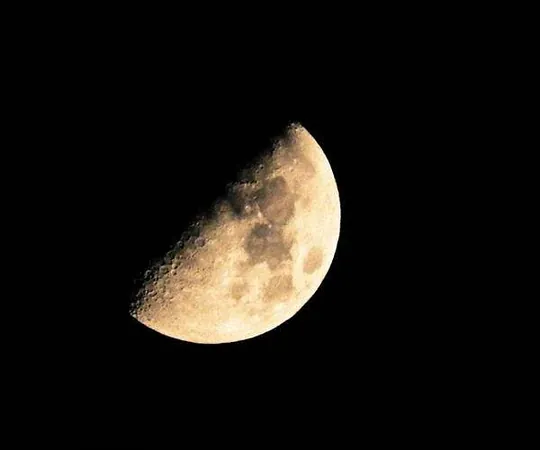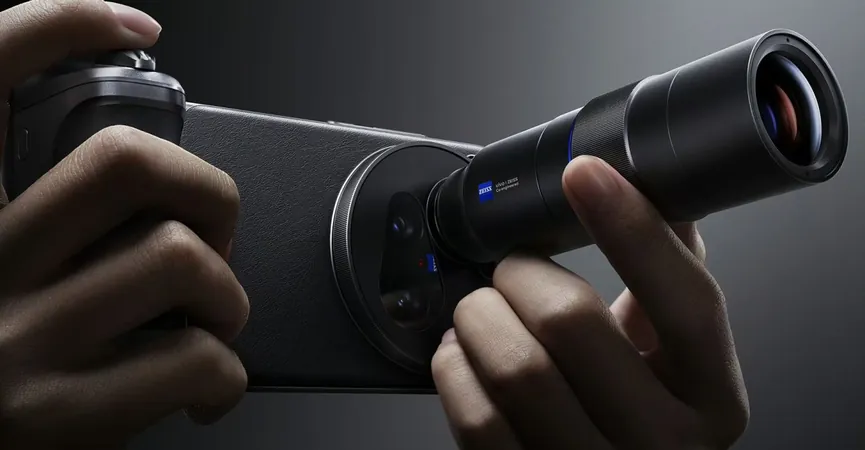
NASA's Stellar Leap: Harnessing Moonlight for Cutting-Edge Earth Monitoring
2025-04-14
Author: Sophie
A Lunar Spectacle: NASA Takes to the Skies
In an extraordinary mission in March 2025, NASA's ER-2 aircraft soared high above the clouds like a futuristic lunar observatory, launching from the Armstrong Flight Research Center in Edwards, California. This spectacular night-time operation was part of the Airborne Lunar Spectral Irradiance (air-LUSI) project, aiming to enhance Earth science research.
Moonlight as a Precision Tool
Armed with a state-of-the-art spectroradiometer, the air-LUSI instrument captured moonlight across various wavelengths and phases. By analyzing how sunlight reflects off the Moon's surface, scientists are calibrating Earth-observing satellites with unprecedented precision.
Kevin Turpie, the project’s principal investigator at NASA's Goddard Space Flight Center, emphasizes the Moon's role: "As a reliable reference, the Moon is ideal for satellites to always measure Earth's changes accurately." This consistency aids satellites in monitoring crucial aspects like climate, ecosystems, and ocean dynamics.
Soaring Above Distortions
Flying at an impressive altitude of near 70,000 feet, the ER-2 aircraft operated above 95% of Earth's atmosphere. This tranquil stratospheric zone eliminates much of the atmospheric distortion, resulting in highly pure data—a scientific jackpot.
Unparalleled Accuracy in Moon Measurements
Kelsey Bisson, a NASA program scientist, highlights that air-LUSI has achieved the most precise lunar measurements to date. "This data not only enhances our understanding of Earth’s dynamics but also introduces a cost-effective way to recalibrate satellite systems," says Bisson.
Cost-Efficiency and Collaboration
By improving calibration processes, air-LUSI diminishes the dependence on expensive onboard reference devices, resulting in both enhanced data quality and reduced mission costs.
This groundbreaking initiative is a collaborative effort involving NASA, the National Institute of Standards and Technology (NIST), the U.S. Geological Survey, and universities from both sides of the border, including the University of Maryland Baltimore County and Canada's McMaster University.
Innovative Technology at Play
McMaster University contributed cutting-edge technology like the Autonomous Robotic Telescope Mount Instrument System and the High-Altitude Aircraft Mounted Robotic (HAAMR) telescope mount, which made precise lunar tracking possible during the mission.
Andrew Gadsden, a co-investigator from McMaster, enthusiastically noted, "The collaboration between our American and Canadian teams paves the way for groundbreaking advancements in engineering and science."
A New Dawn for Earth Observations
With the successful implementation of the HAAMR system, we stand on the brink of a new era in airborne lunar observation. Co-investigator John Woodward IV says this mission has yielded "the highest accuracy measurements" of lunar light, setting the stage for enhanced Earth observation capabilities.









 Brasil (PT)
Brasil (PT)
 Canada (EN)
Canada (EN)
 Chile (ES)
Chile (ES)
 Česko (CS)
Česko (CS)
 대한민국 (KO)
대한민국 (KO)
 España (ES)
España (ES)
 France (FR)
France (FR)
 Hong Kong (EN)
Hong Kong (EN)
 Italia (IT)
Italia (IT)
 日本 (JA)
日本 (JA)
 Magyarország (HU)
Magyarország (HU)
 Norge (NO)
Norge (NO)
 Polska (PL)
Polska (PL)
 Schweiz (DE)
Schweiz (DE)
 Singapore (EN)
Singapore (EN)
 Sverige (SV)
Sverige (SV)
 Suomi (FI)
Suomi (FI)
 Türkiye (TR)
Türkiye (TR)
 الإمارات العربية المتحدة (AR)
الإمارات العربية المتحدة (AR)